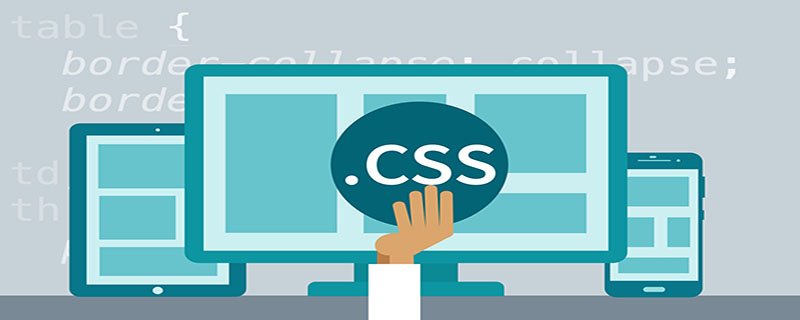Take you to play with various direction arrows in css

When developing pages, I encounter many lists that require the use of arrows. You can directly use pictures as background paving. Pure CSS can also be used, and there are no compatibility concerns. No need CSS3, by comparison, works better than images.
Principle: For a square with equal height and width, select a side you need and intercept it to become a trapezoid. When the height and width are both 0 and the other sides are transparent, a triangle It comes out
Trapezoidal code: 
html:
<div class="arrow"></div>
css:
arrow{
width:10px;
height:10px;
border:10px solid #000;
border-left-color:orange;
} Set the height and width to 0, and the other sides are transparent colors, and the triangle comes out: 
html:
<div class="arrow"></div>
css:
arrow{
width:0;
height:0;
border: 10px solid transparent;
border-left-color: orange;//左箭头
}In development, you can use pseudo-classes to position the implementation without changing the dom structure, which is simple and elegant. content provides the position of the triangle. This attribute cannot be missing. 
html:
<div class="arrow">文字文字</div>
css:
div{
position:relative;
arrow{
width:0;
height:0;
border: 10px solid transparent;
border-left-color: orange;
position:absolute;
content:'';
}Now that we are pursuing graphic design, there is another type of triangular line arrow, which is more popular.
Set two pseudo-classes. The first pseudo-class covers the other pseudo-class. Just leave some lines out: 
html:
<div class="arrow">文字文字</div>
CSS:
div {
position: relative;
}
.arrow:after,.arrow:before {
width: 0;
height: 0;
border: 10px solid transparent;
border-left-color: orange;
position: absolute;
content: "";
}
.arrow:before{
top: 0;
left: 70px;//根据实际情况调整
border-left-color: white;
}may you like it.
Thank you everyone for reading, I hope you will benefit a lot.
This article is reproduced from: https://blog.csdn.net/qq_34250472/article/details/55513862
Recommended tutorial: "CSS Tutorial"
The above is the detailed content of Take you to play with various direction arrows in css. For more information, please follow other related articles on the PHP Chinese website!

Hot AI Tools

Undresser.AI Undress
AI-powered app for creating realistic nude photos

AI Clothes Remover
Online AI tool for removing clothes from photos.

Undress AI Tool
Undress images for free

Clothoff.io
AI clothes remover

Video Face Swap
Swap faces in any video effortlessly with our completely free AI face swap tool!

Hot Article

Hot Tools

Notepad++7.3.1
Easy-to-use and free code editor

SublimeText3 Chinese version
Chinese version, very easy to use

Zend Studio 13.0.1
Powerful PHP integrated development environment

Dreamweaver CS6
Visual web development tools

SublimeText3 Mac version
God-level code editing software (SublimeText3)

Hot Topics
 1662
1662
 14
14
 1418
1418
 52
52
 1311
1311
 25
25
 1261
1261
 29
29
 1234
1234
 24
24
 How to use bootstrap in vue
Apr 07, 2025 pm 11:33 PM
How to use bootstrap in vue
Apr 07, 2025 pm 11:33 PM
Using Bootstrap in Vue.js is divided into five steps: Install Bootstrap. Import Bootstrap in main.js. Use the Bootstrap component directly in the template. Optional: Custom style. Optional: Use plug-ins.
 Understanding HTML, CSS, and JavaScript: A Beginner's Guide
Apr 12, 2025 am 12:02 AM
Understanding HTML, CSS, and JavaScript: A Beginner's Guide
Apr 12, 2025 am 12:02 AM
WebdevelopmentreliesonHTML,CSS,andJavaScript:1)HTMLstructurescontent,2)CSSstylesit,and3)JavaScriptaddsinteractivity,formingthebasisofmodernwebexperiences.
 The Roles of HTML, CSS, and JavaScript: Core Responsibilities
Apr 08, 2025 pm 07:05 PM
The Roles of HTML, CSS, and JavaScript: Core Responsibilities
Apr 08, 2025 pm 07:05 PM
HTML defines the web structure, CSS is responsible for style and layout, and JavaScript gives dynamic interaction. The three perform their duties in web development and jointly build a colorful website.
 How to insert pictures on bootstrap
Apr 07, 2025 pm 03:30 PM
How to insert pictures on bootstrap
Apr 07, 2025 pm 03:30 PM
There are several ways to insert images in Bootstrap: insert images directly, using the HTML img tag. With the Bootstrap image component, you can provide responsive images and more styles. Set the image size, use the img-fluid class to make the image adaptable. Set the border, using the img-bordered class. Set the rounded corners and use the img-rounded class. Set the shadow, use the shadow class. Resize and position the image, using CSS style. Using the background image, use the background-image CSS property.
 How to write split lines on bootstrap
Apr 07, 2025 pm 03:12 PM
How to write split lines on bootstrap
Apr 07, 2025 pm 03:12 PM
There are two ways to create a Bootstrap split line: using the tag, which creates a horizontal split line. Use the CSS border property to create custom style split lines.
 How to set up the framework for bootstrap
Apr 07, 2025 pm 03:27 PM
How to set up the framework for bootstrap
Apr 07, 2025 pm 03:27 PM
To set up the Bootstrap framework, you need to follow these steps: 1. Reference the Bootstrap file via CDN; 2. Download and host the file on your own server; 3. Include the Bootstrap file in HTML; 4. Compile Sass/Less as needed; 5. Import a custom file (optional). Once setup is complete, you can use Bootstrap's grid systems, components, and styles to create responsive websites and applications.
 How to resize bootstrap
Apr 07, 2025 pm 03:18 PM
How to resize bootstrap
Apr 07, 2025 pm 03:18 PM
To adjust the size of elements in Bootstrap, you can use the dimension class, which includes: adjusting width: .col-, .w-, .mw-adjust height: .h-, .min-h-, .max-h-
 How to use bootstrap button
Apr 07, 2025 pm 03:09 PM
How to use bootstrap button
Apr 07, 2025 pm 03:09 PM
How to use the Bootstrap button? Introduce Bootstrap CSS to create button elements and add Bootstrap button class to add button text




